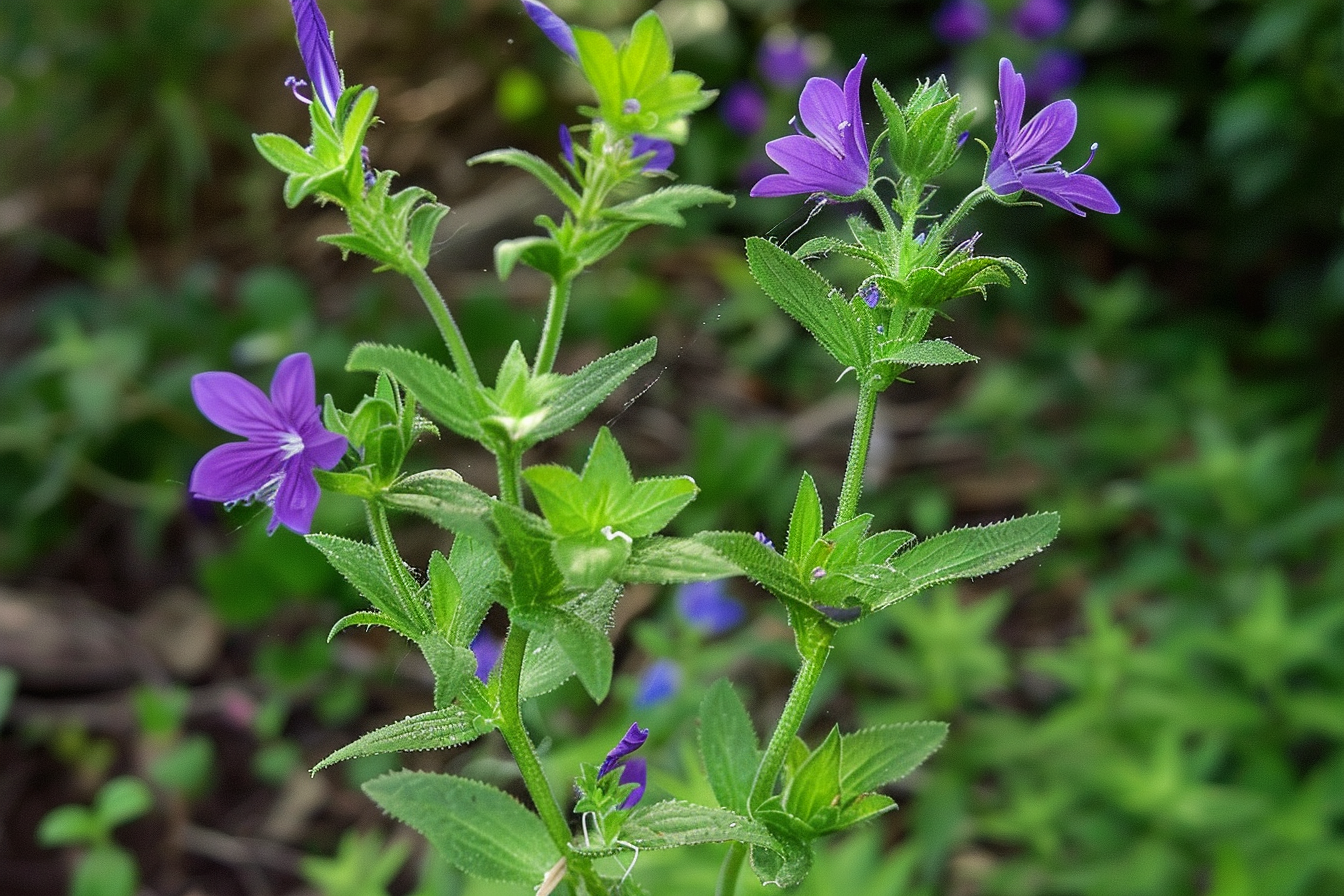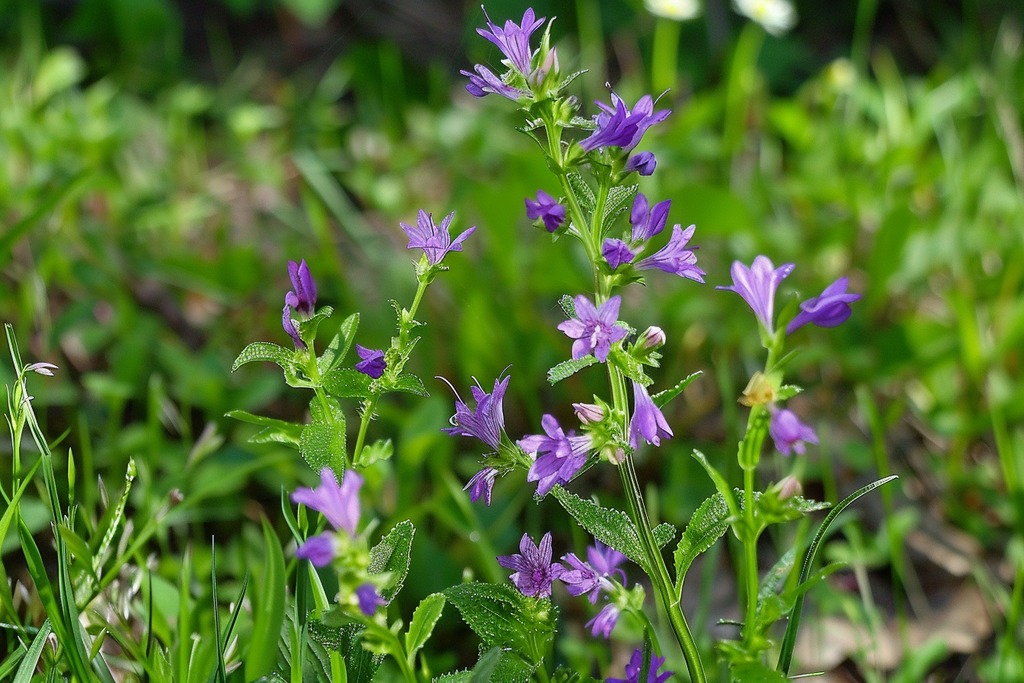In the diverse and verdant landscapes of Coastal North Carolina (gardening zones 8a and 8b), many native plants capture the eye and the imagination, but few are as captivating and historically rich as Venus’ Looking Glass (Triodanis perfoliata). This modest yet striking plant offers more than meets the eye, from its ecological contributions to its resilience and beauty. In this blog, we dive deep into the history of Venus’ Looking Glass, highlight its key benefits, and guide you through nurturing this botanical treasure in your garden.
Please note: The Cameron Team has not been paid or received any other compensation to include any of the products featured on this post, but the author has included affiliate links and content. If you click on a link, they may earn a commission – a high-five for great content!
A Glimpse into History
Venus’ Looking Glass has a storied past that intertwines with the cultural and natural history of the southeastern United States. Named for its reflective, glossy seeds that resemble tiny mirrors, the plant is thought to have been named after Venus, the Roman goddess of love and beauty, symbolizing the beauty and mystery of nature itself. Native Americans and early settlers recognized the plant for its medicinal properties, utilizing it to treat a variety of ailments.
Ecological and Aesthetic Benefits
Ecological Impact: Venus’ Looking Glass plays a crucial role in local ecosystems. It acts as a pioneer species, one of the first to colonize disturbed soils, helping to stabilize the ground and pave the way for other plants. Its presence is particularly beneficial for pollinators. The vibrant purple flowers provide a valuable nectar source for bees and butterflies during late spring and early summer, contributing to the biodiversity of the area.
Garden Aesthetics: Aside from its ecological importance, Venus’ Looking Glass is a charming addition to any garden. Its upright growth habit, paired with star-shaped flowers, can add a touch of whimsy and color to rock gardens, borders, and wildflower meadows. The plant’s ability to thrive in a variety of soil types and its drought tolerance makes it a low-maintenance choice for sustainable landscaping.
Medicinal Benefits
Historically, Venus’ Looking Glass was used by Native Americans for various medicinal purposes. They valued it for its purported diuretic and laxative properties. Although not commonly used in modern herbal medicine, it’s a part of the plant’s heritage that highlights its versatility and the traditional knowledge associated with native plants.
Cultivating Venus’ Looking Glass
Choosing a Location: Venus’ Looking Glass prefers full sun to partial shade and well-drained soil. Its adaptability makes it suitable for a range of garden settings, but it truly thrives in open, sunny spots where its flowers can fully open to attract pollinators, which is why you may find it here and there in your lawn.
Planting and Care: Plant Venus’ Looking Glass seeds directly in fall, as cold stratification helps improve germination rates. If planting in spring, consider stratifying seeds in your refrigerator for about six weeks before planting. Once established, Venus’ Looking Glass requires minimal care. Water during prolonged dry periods, and allow plants to self-seed for continual blooms in the coming years.
Pest and Disease Management: Generally, Venus’ Looking Glass is not susceptible to major pests or diseases. Keeping the area around plants free of debris can help minimize any issues and encourage healthy, vigorous growth.
Conclusion
Venus’ Looking Glass is not just a plant; it’s a piece of the ecological and cultural fabric of Coastal North Carolina. By incorporating this native species into your garden, you not only embrace a piece of local heritage but also contribute to the preservation of biodiversity and the beauty of natural landscapes. So why not give this overlooked gem a spot in your garden palette? Its historical intrigue, ecological benefits, and simple beauty are sure to add a new layer of interest to your gardening endeavors.
FAQs
Q: What is the best time to plant Venus’ Looking Glass seeds?
A: Plant in the fall to allow natural cold stratification, or stratify in your refrigerator and plant in early spring.
Q: How often should I water Venus’ Looking Glass?
A: Water regularly after planting until plants are established; thereafter, water sparingly, only during dry spells.
Q: Is Venus’ Looking Glass invasive?
A: No, it is a native plant and behaves well within ecosystems, promoting biodiversity without overpowering other species.
Explore more about native plants and enrich your garden with biodiversity at North Carolina Native Plant Society.
This comprehensive guide to Venus’ Looking Glass offers a thorough understanding of this unique plant, blending its historical background with practical gardening tips. Whether you’re a seasoned gardener or just starting out, Venus’ Looking Glass is a resilient and beautiful addition worth considering for your next garden project.






